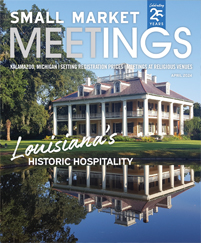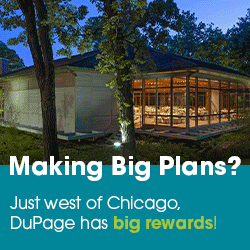Columbia, South Carolina
Columbia, South Carolina, is a both a college town and a capital city, “so there’s such a great mix here,” said Dayna Cantelmi, marketing and communications associate for Experience Columbia.
The University of South Carolina’s (USC’s) main campus is in Columbia, infusing the family-friendly city with 30,000 students from across the country and around the world and “the energy that they bring to the city,” she said.
“Columbia is more progressive than people might think, and a large part of that is due to our university and our students,” Cantelmi said.
The Columbia Metropolitan Convention Center sits between two of USC’s main event venues: Colonial Life Arena, home to USC’s basketball teams, and the USC Alumni Center, which opened in 2015. The arena can seat 18,000 for basketball games but can also seat up to 800 for dinners on the 17,000-square-foot arena floor.
The 60,000-square-foot Alumni Center serves as the gateway to the USC campus and has become a popular venue for meetings, conferences, banquets and receptions. The center has a 10,000-square-foot ballroom that can be split into four smaller spaces; also available are an outdoor patio, a presidential dining room with attached terrace and several conference rooms.
The 142,500-square-foot Columbia Convention Center, which opened in 2004, has an exhibit hall with nearly 25,000 square feet, a 17,100-square-foot ballroom and 15,100 square feet of meeting space.
USC’s conference- and event-planning services can connect planners with a variety of on-campus venues, from functional classrooms, conference rooms and auditoriums to historic theaters, manor homes and even an 18th-floor revolving restaurant that can seat 123 for dinner.
The Russell House Student Union has a variety of spaces, including a 600-seat ballroom, and the Kroger Center for the Arts seats 2,254. The Inn at USC has 116 guest rooms and 3,000 square feet of on-site meeting space.
“The campus itself is beautiful just to walk around,” Cantelmi said, and groups can schedule guided campus tours. The McKissick Museum sits on the school’s historic Horseshoe. The museum is free and open to the public, but groups of 20 or more should contact the museum before visiting or to arrange for guided tours.
Clemson, South Carolina
Clemson, South Carolina, is a city of 14,000 residents with a university of 24,000 students. While the town of Clemson is small, the name recognition of Clemson University “is huge,” said Kade Herrick, tourism director for Visit Clemson.
Many visitors to Clemson come for the university or its sporting events, but the city is also close to the Blue Ridge Mountains and three nearby lakes.
On campus, the Clyde V. Madren Conference Center features a 5,660-square-foot ballroom that can seat 400 for meals or be split into as many as five smaller rooms. The center also has two identical meeting rooms; each can be halved, and each also connects to two of three smaller training rooms. Other spaces include a boardroom and prefunction areas. The conference center is connected to the 89-room James F. Martin Inn.
A mile off campus, the Best Western University Inn and Conference Center has a 6,280-square-foot ballroom for meetings and events.
The Clemson University Outdoor Lab is a retreat campus five miles from campus on the banks of Lake Hartwell with a variety of venues. Kresge Hall is the largest venue and can seat 150 for meals. The lodge-type hall has a soaring stone fireplace and windows that deliver views of the lake and sunset. An outdoor patio and covered porch offer additional event space. Bowfin is a 25-person lakeside building with a stone fireplace, and both the Katydid and Betty’s Place buildings can accommodate events with up to 40 people, who can also mingle on the large porches. The outdoor Cannon Chapel/Pavilion nestled in Clemson Forest can host events for 250 guests. The covered pavilion has lights strung overhead and stairs that lead to a stone and brick amphitheater and fire pit.
Groups can visit the university’s South Carolina Botanical Garden, where the Heritage Amphitheater can seat 400. Smaller events can use a variety of outdoor gardens or indoor spaces.
Though the university serves as the city’s cultural hub, Clemson’s small, historic downtown sits just north of campus, and offers residents and visitors shops, restaurants and bars, the most famous of which is the Esso Club, a 1920s Esso gas station that was turned into a sports bar.











